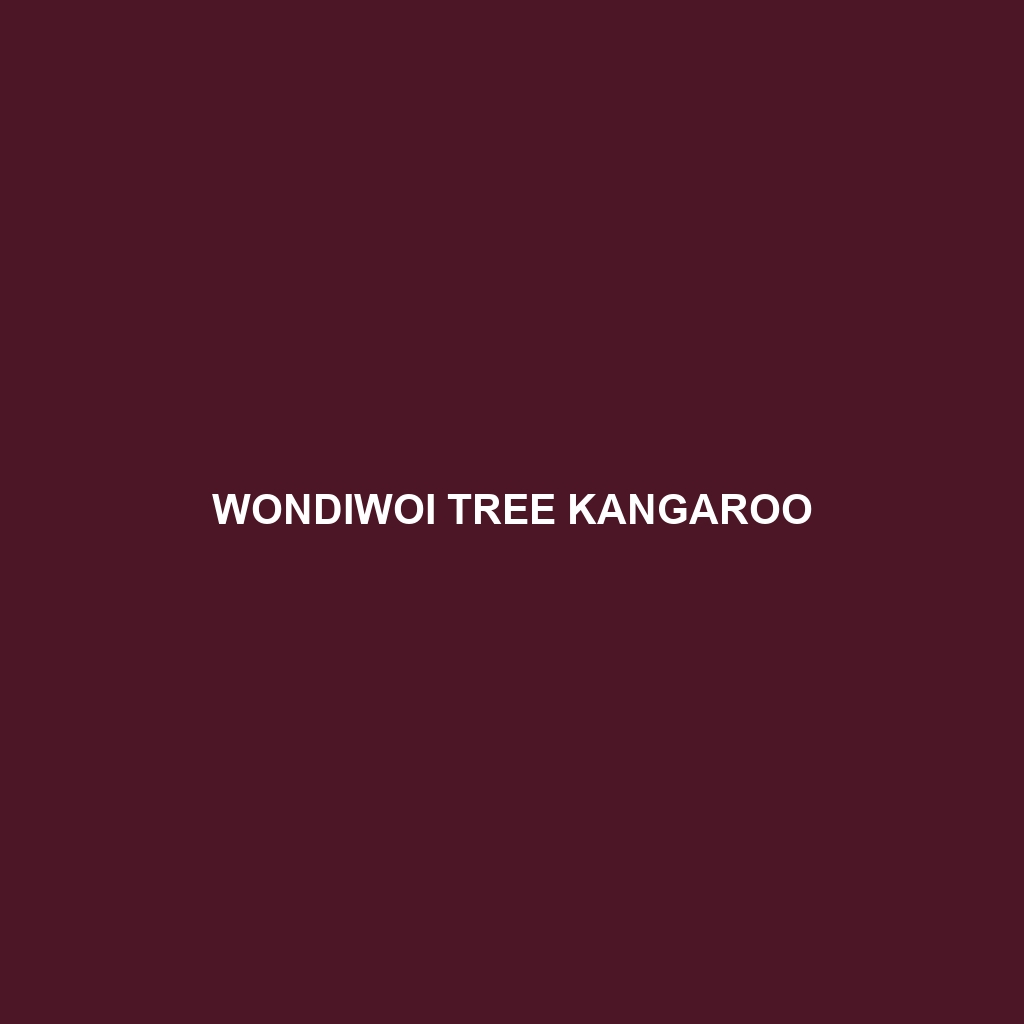Wondiwoi Tree Kangaroo
:
The Wondiwoi Tree Kangaroo (Dendrolagus mayri) is a rare and elusive marsupial native to the montane forests of Papua province in Indonesia. First discovered in the 1920s and thought to be extinct until rediscovered in 2018, this enigmatic species is one of the most poorly known tree kangaroos.
Physical Characteristics:
Size: Medium-sized tree kangaroo, with an estimated body length of 50-70 cm (excluding the tail) and a weight range of 7-10 kg.
Coloration: The Wondiwoi Tree Kangaroo sports a dense, woolly fur coat that is typically dark brown to almost black on the dorsal (upper) side, with a lighter, cream-colored ventral (underside) surface. The tail is usually bushy and can be a distinct yellowish color with black banding.
Special Features: It has strong, muscular forelimbs and hind limbs, which are well-adapted for climbing. Its tail is prehensile and aids in balance when navigating dense forest canopies.
Behaviors:
Social Interactions: Typically solitary animals, Wondiwoi Tree Kangaroos may come together during mating season but spend most of their time alone. They communicate using a variety of vocalizations and scent markings.
Feeding Habits: They are primarily folivores, feeding on leaves, fruits, flowers, and occasionally small invertebrates. Their diet is adapted to the nutrient-poor montane forest environment.
Ecological Roles: As folivores, they play a crucial role in their ecosystem by helping to control plant growth and contributing to seed dispersal through their droppings.
Habitats:
Natural Habitat: Inhabits the remote, high-altitude montane forests of the Wondiwoi Mountains in Papua province. These forests are characterized by dense, mossy vegetation and a cooler, wetter climate.
Adaptations: Adapted to a life in the trees, they have curved claws and strong limbs for gripping branches and leaping between trees. Their woolly fur provides insulation against the cooler temperatures of their high-altitude environment.
Conservation Status:
Current Status: Listed as Critically Endangered by the IUCN Red List due to its extremely limited range and small, declining population.
Threats: Major threats include habitat destruction due to logging and agricultural expansion, hunting, and the impacts of climate change.
Conservation Efforts: Conservation efforts are ongoing but limited. They include habitat protection, awareness campaigns, and potential future plans for captive breeding programs.
Fun Facts:
The Wondiwoi Tree Kangaroo was believed to be extinct for nearly a century until its remarkable rediscovery in 2018 by a team of scientists and researchers.
Unlike other kangaroos, tree kangaroos have shorter hind legs and longer forelimbs, adaptations that make them adept climbers rather than efficient ground hoppers.
They have a unique digestive system that allows them to process the fibrous and often toxic plant materials found in their diet.
By understanding the Wondiwoi Tree Kangaroo’s unique characteristics and conservation needs, we can better appreciate and protect this extraordinary species that clings to existence in the remote highlands of Indonesia.
